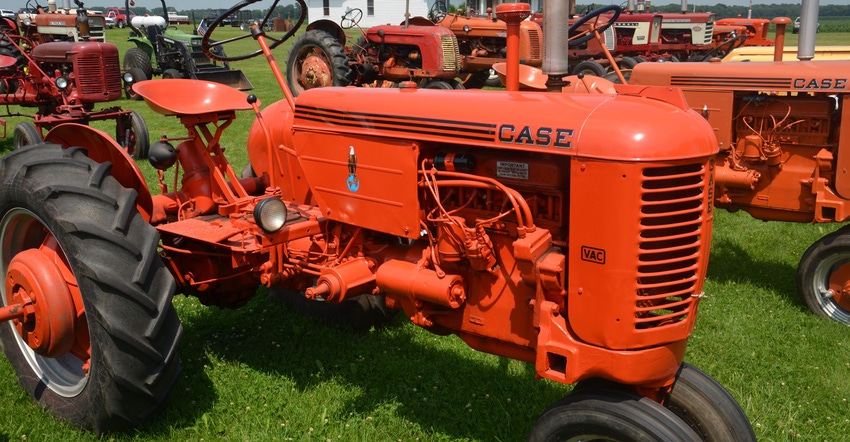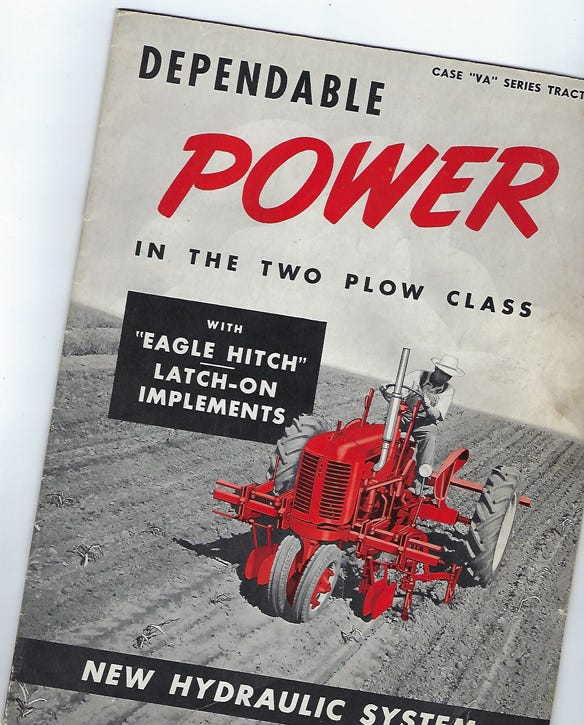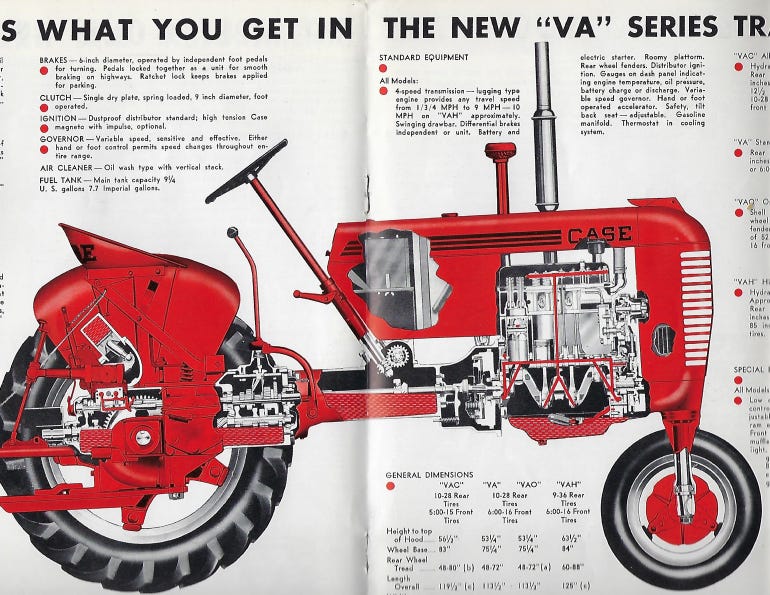December 13, 2018

One tractor that sits proudly in the barn lot each June when the Hedrick family of Battleground, Ind., gets their 84 tractors out for a one-day show is a Case VAC. It’s joined by a couple of other Case models, some still in working clothes. The simplicity but power that Case row crop tractors were noted for in a different era shines through in these tractors.
Case issued a booklet for the VA Series titled “Dependable Power in the Two Plow Class.” Farmers were still interested in tractors that could pull two-bottom plows easily. Case felt it had the answer. It touted the “Eagle-Hitch” latch-on implements, which later faded with other competing systems as the three-point hitch became standard.
This booklet also touted a new hydraulic system for the VA Series. It was a low-pressure hydraulic system with a self-priming pump and was self-lubricating. Companies were still looking for the best solutions in hydraulics to raise and lower implements.

PROUD OF POWER: Case wasn’t bashful about advertising that its tractors could deliver power, even in the small row crop tractor class.

Six models were offered, including the VAC with single front wheel and the VAC with adjustable front axle. The VAC general purpose tractor featured a tricycle front-end. The VA was still a favorite for most jobs, except those requiring front-mounted implements.
Case also offered a high-clearance tractor and a YAO orchard and grove tractor. In my uncle’s shed in Florida was a Case grove tractor. He tended his 6-acre orange grove until it froze out in the early 1980s. The tractor slipped away before I realized it probably should have made a trip north to Indiana.
Transparent tractor
Case wasn’t afraid to show the inner workings of its transmission in its literature. In fact, it displayed a spread of the entire tractor with a “look through” chance to see the inner workings of the machine. The theory was that the more the buyer saw, the more he would appreciate the power, quality and simplicity of a rugged machine.

INSIDE-OUT: Older brochures are known for showing the inner workings of tractors. Companies had nothing to hide about their craftmanship.

According to tractordata.com, Case replaced the V Series with the VA Series in 1942, and continued building variations of it through 1955. Some 150,000 units were built. The VAC only claimed 13 hp at the drawbar, but tests showed it produced 19 hp.
There were 11 versions, featuring differential mechanical disc brakes.
Owners were loyal. The story goes that two farmers filled silos together. One was a Massey-Harris man, the other a Case fanatic. More fanatical was his teenage son. After goading by the Massey man, the Case son pasted a Massey 44 parked at his dad’s farm during silo filling overnight with Case stickers. The wise dad of the son said it wasn’t his fight, and the two could finish it. Rural legend goes that the Massey-Harris still had Case stickers when it was traded for a new John Deere 620 in the late 1950s.
I should know. My dad was the good-natured but ever teasing Massey man!
Comments? Email [email protected].
You May Also Like




